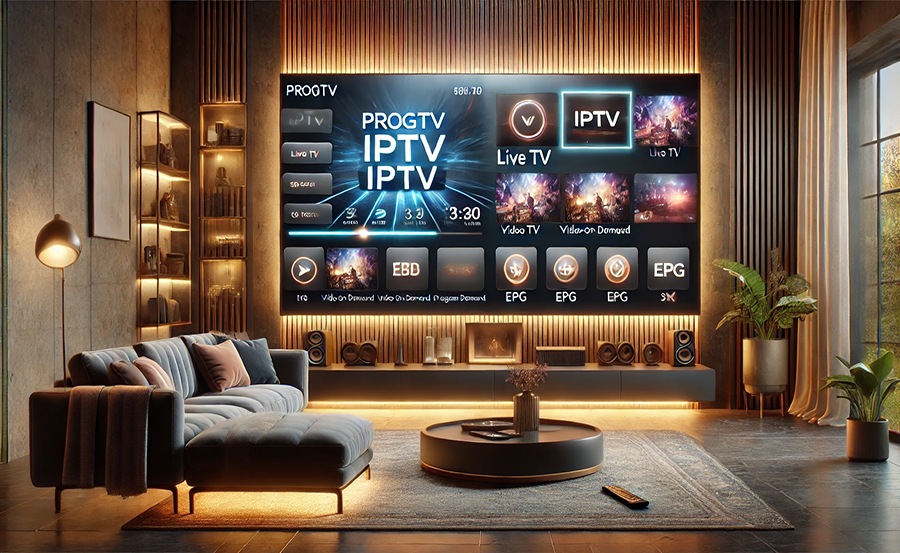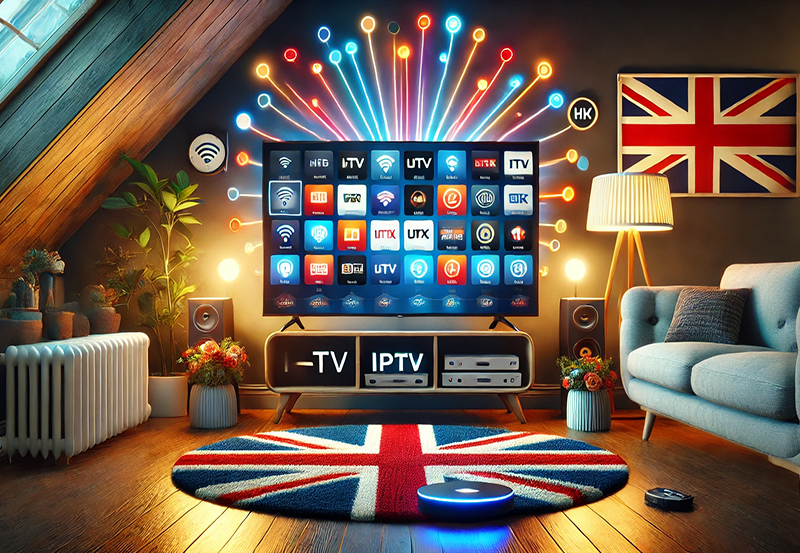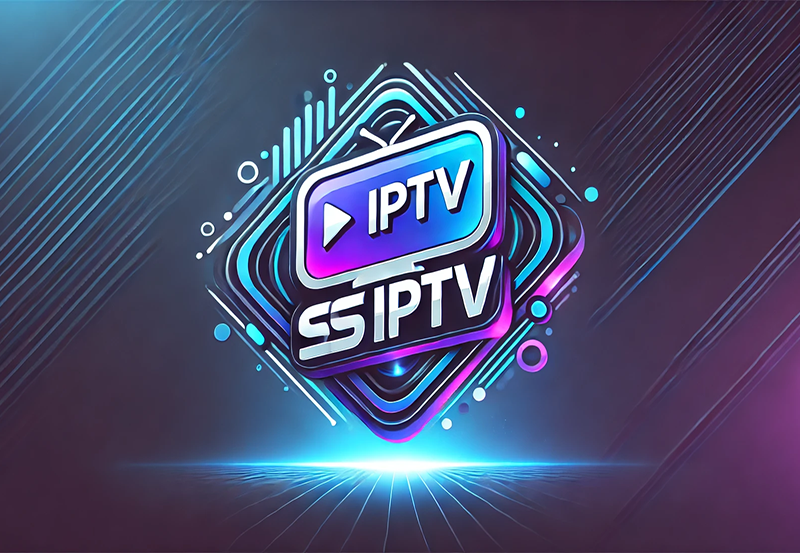Welcome to the world of IPTV, where the universe of entertainment is just a few clicks away. With the boom in digital streaming, IPTV has emerged as a leading solution for those looking to enrich their viewing experience—bypassing the limitations of conventional cable TV. But how exactly do you bring IPTV into your living room? In this guide, we’ll navigate the ins and outs of setting up IPTV at home to ensure a seamless viewing journey.
Understanding IPTV: What It Is and Why It Matters
IPTV, short for Internet Protocol Television, is about streaming TV content through Internet Protocol networks. Unlike traditional satellite or cable television, IPTV delivers content using smart IP-based networks. This shift enables users to access a variety of channels and shows worldwide without the constraints typically associated with traditional television. Buy 1 Year IPTV Subscription and Enjoy Unlimited Content
Why should you consider switching to IPTV? The benefits are compelling—think about accessing a broader selection of channels, flexible viewing schedules, and unique content tailored to your preferences. Whether you’re an avid sports fan looking for IPTV for sports streaming or keen on discovering international channels, IPTV has revolutionized home entertainment.
Key Advantages of IPTV
The advantages of IPTV go beyond just a wider selection of channels. Here are some of the perks that you might find appealing:
- Versatility: IPTV can be streamed on various devices, including smartphones, tablets, and smart TVs.
- Customization: Create your list of favorite channels for quick access.
- Cost-Effectiveness: Typically, IPTV subscriptions are more affordable than cable packages with similar content.
How to Install IPTV: Your Ultimate Step-by-Step Guide
Setting up IPTV may sound daunting, especially if you’re new to digital streaming, but it’s surprisingly straightforward with the right guidance. Here’s a detailed process covering everything you need to know.
Choosing the Right IPTV Service
Your first major task is selecting an IPTV service that fits your needs. Consider factors like available channels, pricing, and customer reviews. Ensure the provider is reputable to avoid potential service disruptions. IPTV for sports streaming might have different offerings compared to a service focusing on general entertainment or international content.
It’s important to research thoroughly—what worked for your friend might not work for you. Therefore, list out your priorities, whether it’s sports channels, kid’s content, or movie archives, and match them against the offerings available.
Setting Up Your IPTV Device
Once you’ve chosen a provider, the next step is ensuring your devices are compatible. Most IPTV providers are compatible with many devices—smart TVs, PCs, or streaming devices like Roku or Firestick. Here’s how you can add IPTV to these devices:
- On a Smart TV: Download the IPTV app either directly from the app store or use the browser to locate it. Follow the setup instructions from the provider.
- On a PC: Use software like VLC media player and input the provided streaming link.
- On a Roku or Amazon Firestick: Download an IPTV app compatible with your device from the app store and install it.
Configuring Your IPTV Application
After device setup, configure your IPTV app. Enter the Activation link or M3U playlist associated with the chosen IPTV service. Follow instructions for the specific app you’re using, as the interface can vary. Typically, the app will require you to input a username and password or a subscription code which you should receive from your subscription provider.
Some interfaces are intuitive, others might take a little exploration but that’s part of mastering your IPTV entertainment. Checking the settings menu for features like parental control or picture settings can improve your viewing experience.
Maximizing Your IPTV Experience
Now that you’ve got IPTV running, it’s time to dive into optimizing your system for top-tier performance. Addressing performance involves hardware and software tweaks that improve streaming consistency and picture quality.
Optimizing Internet Connection
A stable and fast internet connection is crucial for uninterrupted IPTV streaming. Aim for at least 5 Mbps for standard definition and around 25 Mbps for high-definition content. Ensure your Wi-Fi router is up-to-date and placed in an optimal position to cover your streaming devices. Ethernet cable connections provide more stable connections if Wi-Fi proves inconsistent.
Run periodic speed tests and consider upgrading your internet plan if you encounter frequent buffering issues or service drops. Also, keeping routers and devices free from clutter and interference can significantly boost your IPTV experience.
Exploring Additional Features
Most IPTV services offer additional functionalities that can enhance how you use the platform. From recording live TV to setting reminders for shows, these features can be explored to match your entertainment habits. Some services also provide a catch-up feature that allows viewing previously aired content.
Explore the interface of your IPTV app to discover potential hidden gems of features. Master your IPTV entertainment by understanding and leveraging these tools for a tailored experience.
Common Troubleshooting Tips for IPTV
Even the best IPTV services can run into issues sometimes. Here’s how to troubleshoot some common problems effectively.
Addressing Buffering Issues
Buffering can transform an enjoyable IPTV session into a frustrating experience. If you experience buffering, the first step should be checking your internet connection strength. Tighten your internet setup with a wired connection, if possible, and close any unnecessary applications consuming bandwidth.
Provider issues can also lead to buffering; it might be worth verifying if their services are temporarily down or overloaded, which they occasionally announce on their social media or website. Adjusting stream quality settings can also mitigate immediate buffering concerns.
Fixing Channel Loading Problems
Sometimes, channels refuse to load properly. If this happens, refresh your IPTV application and re-attempt loading the channel. Evaluating whether the channel is available with another device on the same network can isolate the issue to device-related or provider-related.
Regularly updating your software and IPTV app can prevent channel access issues due to software bugs or compatibility issues. Keeping in communication with your service provider for any extended outages might save you unnecessary troubleshooting.
The Future of IPTV: Expanding Horizons
As technology continues to evolve, so does IPTV. Future trends predict more integration with smart home devices and artificial intelligence to suggest a more personalized viewing experience. Innovations in 5G technology are expected to make streaming faster and more reliable, which will further expand the realm of what IPTV can offer.
IPTV represents not just a shift in how we consume media but a broader transformation of the industry. By staying informed of the latest trends and advancements, you can ensure your setup remains ahead of the curve, ready to adapt to an ever-evolving entertainment landscape.
Frequently Asked Questions

What is the best IPTV service for sports streaming?
Choosing the best IPTV service for sports streaming depends on the sports you enjoy and the channels you prefer. Services like ESPN+ or FuboTV are popular choices, offering extensive coverage for various sports.
How do I troubleshoot buffering issues with my IPTV?
To combat buffering, start by checking your internet connection speed. Move closer to your Wi-Fi router or switch to a wired connection for better reliability. Reducing the number of connected devices can also help minimize buffering.
Is IPTV legal?
The legality of IPTV can vary depending on your location and the service provider. Ensure that you choose licensed IPTV services that comply with local regulations to avoid legal issues.
What Internet speed is recommended for IPTV?
For IPTV streaming, a stable connection of at least 5 Mbps for standard definition and 25 Mbps for high definition is recommended. Faster speeds will ensure smooth, uninterrupted streaming experiences, especially during peak hours.
Can IPTV work on any device?
Most IPTV services support a wide range of devices, including smart TVs, computers, smartphones, and dedicated streaming devices. Always check compatibility with your chosen service provider’s app before purchasing or downloading it.
How can I record IPTV programs?
Recording IPTV varies depending on the service and app used. Some services offer cloud DVR functions, while others rely on third-party apps or device options. Exploring the IPTVs app settings is a good start for finding recording features.
Accessing Global Content: IPTV vs. Cable TV





